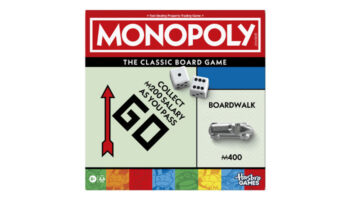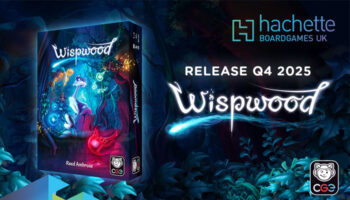Inventors wear many hats these days… Is considering aspects like cost a vital part of the inventing process? Or can ‘self-policing’ ideas kill innovation?

Does considering cost come at a cost? Inventors and IR execs discuss the good, the bad and the ugly of ‘self–policing’ the commercial viability of ideas?
 Geoff House,
Geoff House,
Owner, Tricky
As inventors in 2025, there are distinct changes in the way we operate today compared to how things were back when I started 22 years ago. The retail environment has dramatically changed, and manufacturers and inventors have had to evolve with it.
Over the years many companies have reduced their design and engineering teams. This has, to some extent, led to the inventor replacing the internal design resource. This in turn means inventors have to be more commercially aware of the challenges the company faces when reviewing ideas that are pitched to them.
As inventors, we need to be blue sky thinkers, product designers, graphic designers, project managers, model makers, cost engineers, marketeers – and be decent enough at storyboarding and video production – to tie it all together. Over the past decade, the need for inventors to be aware of the factors relating to launching a new product has become more and more important. “Have you had it costed?” is often one of the first questions inventors are asked. So, does consideration of these factors hold back innovation? The answer is probably yes in most cases.
When you are given a brief or cost target, it’s only natural to pass over ideas that you know won’t ‘hit’. By passing over these ideas, you don’t fully investigate where they could lead – or worse still, you may never to go back to them when cost targets are less important. It could certainly be argued that wearing so many hats stifles the true blue-sky thinking that we all strive for as inventors.
If we can no longer rock up with a sketched idea and still have the potential to negotiate a deal – and instead must invest time and money in development, costing, prototyping, packaging, marketing insight and then do a TVC – well, it’s unlikely the ‘less safe’ ideas are going to make off the sketchbook.
All that said, manufacturers still need to stand out in a crowded market and deliver innovation, so the need for inventors to be commercially aware and super creative has never been more important.
 Sam Unsicker,
Sam Unsicker,
Partner, BMT
I believe the question can be answered in two ways. One way is that it forces more creativity to make something fun fit within all the restraints that are out there… And the other way to think about it is that, yes, it totally holds back innovation!
I think all this started many years ago when the retailers started forcing the manufacturers to fit things in specific box sizes for their pallets and shelves. This started when everyone was saying: “Think outside the box” and they were literally forcing us to think inside the box!
I still try – and hope others do too – to just come up with something fun, then worry about the cost and the size later. You can’t be 100% free thinking and come up with the next greatest thing if you handcuff yourself from the start…
So, to completely answer the question, I think we should just focus on coming up with something awesome – and then figure out how to make it fit into a 10x10x4 box with no motor and .03 cents of plastic!
 Kim Vandenbroucke,
Kim Vandenbroucke,
Owner, Brainy Chick Inc
This is what makes the professional invention community, ‘professionals’. We know how to be wildly innovative within the guardrails. It’s not easy to dream big while also keeping one eye on cost, safety and how something’s actually going to get made. Going full imagination-mode and knowing when to pull it back in? That’s our superpower. And when paired with the right partners, it turns big ideas into real-world hits.
 Brian Thornber,
Brian Thornber,
Manager, BlueJ Innovation & Inventor Relations, Jazwares
In today’s landscape, I think inventors are expected to juggle more than just blue-sky thinking. Working within costing and manufacturability constraints can be the fuel to innovation, and it can also help you be even more creative! It makes you think about how to get the most play out of every piece… How much movement can you get out of a single motor? How many parts do you need to get the biggest WOW moment?
That said, not every idea has to follow the rules to succeed. Sometimes the right thing to do is trust your gut and stay true to the concept. The key is to stay open, collaborative and flexible in how you present the opportunity. That mindset alone can shift how your concept lands and what comes next.
 Brett J. Gilbert,
Brett J. Gilbert,
Game Designer
Let’s start with a few self-evident truths: knowledge is power, constraints foster creativity, and the light of the flame of any game idea must inevitably get shone through this lens sooner or later. Better, then, to embrace these irresistible challenges, rather than imagine them immovable obstacles to our creative aspirations. Better yet to take time to understand them.
But one must be careful. Adopting too-eager a policy of self-policing can absolutely thwart innovation and discovery. You cannot know what you’re going to find in the weeds of any idea until you go looking. And if your smugly well-informed self-policing means you don’t take that first step? Well, those thousand-mile journeys are going to be thin on the ground.
All creative industries exist as an entanglement of art and craft. The more we know, and seek to understand, about our craft, the more adept, purposeful and successful our art can become.
 Pete Cartlidge,
Pete Cartlidge,
Partner, Fuse
Inventors are a hat stand for sure, but I think it’s part of the nature of inventing that inventors try to find solutions for a variety of challenges and problems out of their control, pretty much all the time – or at least until an item is sold in. Good inventors are entrepreneurial and I think most would see entrepreneurs as very capable at multi-tasking. As inventors, on one level this might be about being expansive and open-minded about a range of development paths for a new toy or game. We are curious and like to explore new and different things, so it’s pre-programmed like that!
In my own role at Fuse, I began my career as a designer and modelmaker and now I’m in more of an MD role with all that entails. Like most people I know who have followed a similar path, it’s beneficial to have been a creative once upon a time as you have an empathy – some would say sympathy – for the process, and the highs and lows inventing brings.
In terms of our relationships with our customers, I think a lot of companies have a good appreciation of what inventors can add beyond handing over the keys to our IP post-license. Inventors are used to being very stubborn and persistent to give our creations the best possible chance to see the light of day and we ‘play’ different roles throughout the whole ‘submission to license’ journey.
We have to be good researchers to identify the commercial opportunities and good agents to find the right people to take our invention to. Once our foot is in the door so to speak, we then need to be persuasive and respectful with the brand design team potentially developing our item – and then charming marketeers to both make the pitch and engage the future champions and stakeholders in the product.
As for the nitty gritty of the detail of the product, I think there lies the highest expectation of an inventor – in terms of the level of ingenuity, engineering proof of concept and robust testing in our prototype. For this, we need to be trusted as great builders but we also need to exude the calm reassurance that our simple prototype can be recreated at scale, and at an affordable price point, ready for the mass market.
One bug bear possibly is an assumption that we somehow must know the item can be produced at an affordable cost or if the same feature can be achieved with a single motor! In those instances, we don the hat of polite indifference to the detail of ‘pre-production’!
 Dominique Roy,
Dominique Roy,
VP of Advanced & Industrial Design, Make It Real
As creatives, we all fall in love with new ideas – and it’s easy to be drawn to something completely original. But the truth is, from a commercial perspective, successful ideas in the toy industry are often not the most original ones.
Bringing a toy to market requires more than just a good idea. Many factors need to align: relevance to current trends, cost and pricing, marketing potential, design appeal and retail placement, to name a few. While some of these are outside an inventor’s control – especially if you’re just starting out – many others can be addressed with a bit of resourcefulness and some strategic thinking.
When we pitch a concept internally, I always make sure we’ve done our homework from every angle we can. Of course, we highlight what makes the idea fresh and fun, but we also include insights that speak the language of our audience – marketers and decision-makers. That might include sales data and pricing for similar products on e-commerce platforms, or a rough bill of materials to show we’ve considered cost. That kind of information is accessible or can be projected benchmarking existing products – and using it can significantly improve your chances of selling a concept.
 Jon Vanderbeek,
Jon Vanderbeek,
VP, Sweet Spot Studio Inc
I think the self-policing of ideas leads to great ideas. Just like pressure turns coal into diamonds, our parameters will guide us to innovation with a purpose and strategy built around the challenges, barriers and opportunities around us.
 Matt Nuccio,
Matt Nuccio,
President, Design Edge
As inventors today, we do have to wear a lot more hats than we used to. Costing, manufacturing constraints, safety requirements, retail realities – it’s all on our radar before we even step into a pitch meeting. In a way, yes, this kind of ‘self-policing’ can feel like it holds back blue-sky creativity. You might kill a great idea early because you know it’ll be too expensive or too complex to ever make it to shelf.
But at the same time, I’d argue it’s become a necessary discipline. The toy and game industry is incredibly competitive, and if you want to increase the odds of success, you need to think like a marketer, a manufacturer and a retailer before you think like an artist. It’s not about limiting creativity… It’s about focusing it.
That said, the bigger problem is that the average inventor just doesn’t have access to the right knowledge or contacts to get accurate information early in the process. That lack of insight can create a kind of tunnel vision, where you’re either overestimating what’s possible or grossly underestimating the cost. That’s where great ideas often die – not because they weren’t good, but because they were developed without the right guidance and market context. So, finding a partner who has a strong knowledge of the manufacturing process can be a great asset.
So yes, it’s a balancing act. But getting better access to the right tools and people is just as important as wearing all those hats.
 Hadi Barkat,
Hadi Barkat,
CEO & Founder, Helvetiq
Inventors wearing multiple hats, like considering costs, is tricky. While we at Helvetiq don’t expect inventors to do our job, early focus on costs risks stifling truly novel ideas. If inventors are constantly putting on their “cost accountant” hat too early in the process, there’s a real risk that truly novel concepts get lost. However, I also see significant benefits when inventors have some understanding of the practical realities we face as publishers. That awareness, even without deep expertise, can make a submission stand out. It’s about balancing wild creativity with a touch of real-world understanding.
 Fi Murray,
Fi Murray,
Founder, Making Things Studio
At Making Things Studio, turning something make-believe into something real is the mission.
Sure, often a concept is sparked with a gut-punch of instinct and imagination, but then we need to shift gears to create a business opportunity for our licensees. We pressure-test with insight, play-testing, commerciality and strategy.
It’s about shaping an idea into a commercial entity. Costing, viability, market potential, brand positioning – these aren’t constraints, they can be catalysts! They help shape an idea that can be made, sold and loved. One of my favourite quotes from Jack White says it best: “Telling yourself you have all the time in the world, all the money in the world, all the colours in the palette, anything you want… That just kills creativity.”
Without the hustle to critique our own ideas before they hit the pitch deck, they would stay as just that, ideas.
 Phil Neal,
Phil Neal,
Owner, Go
When you ask a kid what they think would be a fun toy, they are typically unencumbered by matters of cost and practicality. They might tell you that what they really want is “A magic carpet that levitates” or “A car that transforms into a monster” or “A puppy with life-like movements and personality.” They really don’t care whether the idea defies the laws of physics, or how much such a toy might cost for that matter. Not their problem!
But for inventors dreaming up new, manufacturable ideas for our customers… Cost matters – a lot. Often the best, sell-able ideas provide a simple magic feature that hits a price target. So, it’s a vital part of any new concept pitch. Pennies matter more than ever these days.
With that said, at the front end of the process we do like channelling our inner-kid and try imagining ideas without constraints – cost be damned. Because it is often the idea, after the initial idea, that ends up being the new idea – the one that costs out! Because for most of us, where we start on a project is rarely where we end up.
 Massimo Alessio Zeppetelli,
Massimo Alessio Zeppetelli,
Director of Inventor Relations, Growth & Marketing, Oink Games
Inventors wearing multiple hats can be a double-edged sword. A better understanding of costing, production, and positioning definitely helps make ideas more pitch-ready – and we as a publisher appreciates that. But I do think there’s a creeping risk when inventors start internalising the “no” before anyone’s even said it.
Some of the most surprising ideas I’ve seen wouldn’t have survived that kind of early filtering. Innovation doesn’t usually come from the most practical starting point and often comes from something weird, messy, and sometimes a bit unpitchable. The polish comes later. That being said, a pitch accompanied by a maximum one-minute video is still the gold dust of a pitch!
What’s more, I’ve noticed that when inventors pre-edit too hard, a lot of their concepts start to look the same: safe, familiar, easy to produce… That’s great for filling a line, but not always for moving the needle creatively.
So yes, it’s great when inventors can consider the realities of the market, but the most exciting ones I work with tend to defer that step until after they’ve explored the full creative chaos. Reining yourself in too soon might save a few rounds of feedback, but it could also rob you of the idea that would’ve really stood out.
 Ellie Dix,
Ellie Dix,
Owner, The Dark Imp
If your intention is to license your toy or game, it really helps to think of it as a product. You’re selling more than a toy or game idea. A good name and a clear vision for packaging and positioning can help your concept land when you pitch it. When you have the full product clearly in mind, you’re more able to see how your toy or game will fit into a publisher’s line… And gives you a framework from which to pitch.
However, this doesn’t mean that all toy and game ideas need to start with the commercial proposition. Part of the joy of inventing is following crazy ideas just to see where they take you. You might end up with something brilliantly marketable anyway… And, of course, you might not. If we always create through the lens of the current market, we run the risk of perpetually creating more of the same. I want to cast my net wide and kindle any sparks of ideas – however unusual. Then later I can edit with my commercial head on.
 Stephen Wilson,
Stephen Wilson,
Game Designer
Self-policing creativity can hold back innovation but, for me, it’s become a necessary and important part of making games that publishers will consider.
Wearing the ‘ideas hat’ is still the most fun part of being an inventor. This hat doesn’t care about cost, complexity or commercial viability. I’ve got two notepads – one digital, one physical – full of all my game ideas. Flicking through, I see one that involves only one single playing card, while another needs 25 ping pong balls, a bright light source, a platform grid, cards and a board. It’s no surprise that both remain firmly in the ‘notepad only’ stage…
Since licensing Bish Bash Bosh a year ago, I’ve signed deals on two more games; so first a card game and now two ‘cards plus’ games. The similarity and simplicity of these is no accident. I’ve started self-policing my ideas through multiple lenses; not just component cost, but also ease of learning, replayability and social interaction. These factors, amongst others, matter deeply to mass market publishers, and they’ve become important to my process too. I want my games to be picked up and played – they’re quick to learn, fun to replay and capable of sparking laughter or debate around a table.
At my first Mojo Pitch in 2022, I showed off some solid ideas, but they would have been quite expensive to manufacture. Looking back, it was naïve to expect a publisher to take a chance on a big-budget game from someone with no track record. Although I would love to hear some examples to the contrary. So my first Mojo Pitch experience was humbling but helpful. An essential step in my journey as a game inventor. It pushed me to think not just like a creator, but like a collaborator. Someone who brings publishers ideas they want to, and can, produce.
I don’t see this ‘self-policing’ as playing it too safe. I see it as building trust. If I can prove that I understand the market and can deliver engaging, thoughtful games, then hopefully I’ll earn the space to be bolder and more innovative in future.
 Naama Weiss,
Naama Weiss,
Co-Founder, Incredible Us
Creativity without commercial context is just fantasy. Inventors today can’t afford to be just ideas people. We’re expected to think like full pre-production teams: costing, safety, manufacturing, shelf fit… That’s not a creative burden. That’s the job.
Self-policing doesn’t kill innovation. It kills weak ideas early. If your concept only works when cost, logic and physics are ignored, then it was never marketed-ready. The goal isn’t to protect every wild idea. It’s to find the one wild idea that can actually ship. We don’t need fewer constraints. We need sharper ones.
But hey – a brilliant enough idea can always find a way to sneak past the gatekeepers!
 Ste Smith,
Ste Smith,
Founder & Creative Director, WITH Creative
Inventing isn’t just about coming up with fun ideas – it’s about making those ideas work in the real world. Understanding things like materials and manufacturing processes, costs and margins requirements, packaging, marketing and sales and distribution doesn’t kill creativity, it sharpens it. The real magic is turning a brilliant idea into something a global brand can say yes to.
 Danny Kishon,
Danny Kishon,
MD, All in 1 Products
It’s been the case for many years that the further down the development path a new concept has been taken, the more chance it has of being picked up. This is partly because it makes the process easier for the company – but also because it means less imagination is required to see its potential by companies. It also means the inventor or inventor group has ‘fact checked’ its viability more, for which it’s likely to be a better product.
These types of products have tended to come from the larger inventor groups, where multiple skills are brought together. The only difference in recent years is that the market is tougher, so if fewer concepts are being picked up, the more developed ones end up becoming a larger percentage of what lands.
Does that mean inventors in general should wear more hats and try and police themselves more? I would argue not. People should spend their time on what they are best at and get help with what they don’t know. If you want to innovate, you need to spend your time innovating, not learning other skills.
If you want to take your project further down the development road, then find someone to help you. That may be another inventor or a specialist in a production area, or a hybrid agency like All in 1 Products. Because we manufacture products as well as licensing IP, we have a lens that factors in experience in production, licensing and the retail market to any inventor project we get involved with. We make the inventor part of a team, perfecting the project while giving them the time to keep working on new innovations.
Innovation is only held back by not having enough time dedicated to it. When it comes to hats, my advice is to find one that suits you and keep wearing it.
 Gideon Coster,
Gideon Coster,
Director, Theora Concept
While disregarding the commercial viability of an idea can hinder innovation, it’s crucial for any invention aimed at commercialisation to consider cost factors. There are numerous brilliant ideas that, due to current technological and economic constraints, aren’t feasible to produce profitably.
A prime example is our Pop-It toy. Originally conceived in the 1970s by our parents, the initial design utilized rubber – which was expensive and less tactile. As a result, the product didn’t gain traction at the time. It wasn’t until decades later, with the advent of affordable and pleasant-to-touch silicone, that the toy was reintroduced and achieved widespread popularity. This illustrates how the maturity of an invention, in terms of both material availability and market readiness, is essential for successful commercialisation.
 Liat Waks,
Liat Waks,
Co-Founder, Incredible Us
In today’s toy and game world, inventors are expected to think like designers, marketers and cost engineers all at once. Some might see this early self-editing as a block to creativity; I see it differently.
Thinking inside the box, with real-world limits like costing and safety, can actually boost innovation. It challenges us to be smarter, leaner and more inventive. A single constraint can lead to a brilliant mechanic or a fresh design twist. Yes, we need space to dream. But shaping those dreams within a framework often leads to the most magical ideas… The ones that can turn from dreams to reality.
 Brent Geppert,
Brent Geppert,
Senior Product Manager, Educational Insights
Doing a bit of research up front doesn’t kill the magic, it actually gives it a chance to become a real product. It helps move a concept from the “wouldn’t-it-be-cool-if” stage to “we-could-actually-make-this” stage. All this upfront work helps speed up the process of getting a yes – or at least a well-informed maybe. Not sure if this is ‘policing’ per se, but just good old-fashioned due diligence… Or maybe borrowing from the current vernacular we could call this ‘inventor adulting’.
Over the last 15 years, I’ve had plenty of inventors pitch ideas that immediately set off alarm bells, like “This game will literally cost $12.00 to make in its current form.” We can always see the ‘diamond in the rough’, but less rough is always better than too much rough. Coming up new concepts year after year is no easy task for any inventor, but we also have to live in reality so manufacturability and cost really do matter.
That said, companies must pull their weight too. We need to thoroughly understand our own market and factory limitations before signing a contract. The best results happen when both sides bring a mix of practicality and possibility to the table. We don’t want to squash creativity, we just want it to survive contact with real time reality. And when we find that sweet spot between dreaming big and thinking smart? That’s when the real magic happens.
 Westley Ciaramella,
Westley Ciaramella,
Partner, Catapult Concepts
Catapult is built with two multi-hat wearing inventors. Working lean and smart has been a strength for us; creating over-built prototypes would slow down our process. When inventing a new toy or game, we research how original of an idea it is and mock up a quick playable version. An idea can be trashed if it fails either of those first steps.
In our process, my hats include creative, design and marketing, while Keith wears hats of engineering and model-building cost-sensitive mechanisms. With the current cost challenges, we will have to just work smarter without straying from what has made us successful.
 Drew Richards,
Drew Richards,
Game Designer
Costing is just one lens, but there are a whole bunch of others you end up using when you’re thinking about an idea… How does it fit with existing lines? Can the sales team actually sell it? How do their relationships with distributors shape how it gets pitched? Does this feel like something the publisher would make? And always that big one: is there space to be innovative here, without becoming ‘too risky’?
These lenses can be both helpful and completely paralysing. If you’re too focused on where you think you should end up, you risk missing what’s actually taking shape in front of you. That’s why reflection and iteration are so important.
You might start out with a game in your head. Let’s call it ‘AB’. By the time it hits paper, it’s morphed into ‘ABC’. Then you test it and realise what really works is ‘AC’ – and ‘C’ wasn’t even part of the original plan! At that point, you can either fight to drag it back to what you thought you wanted, or you can accept that this new thing is actually better and figure out who it would be a good fit for. That ability to pivot is crucial.
It’s also true that if a brief is too open – ‘You can make anything you want!’ – it’s surprisingly hard to start. Too much freedom is overwhelming. The minute you add a small restraint: ‘You can make anything you want, but it has to involve a toothbrush’, your brain kicks into gear. Restrictions don’t block creativity; they give it a shape to push against.
How you frame those restrictions really matters too. ‘Costs under $1’ is technically useful, but creatively dull. Reframe it to something like: ‘A 30-card game where every card can be used in two ways’. Suddenly it’s a much more interesting challenge. You’re still meeting the same goal, but now you’ve got something to play with.
Of course, briefs can be too open or too specific. ‘Costs less than $1’ is huge, but ‘A 24-card safari stacking game for tourists at airport gift shops’ might be so narrow it feels like a chore. Somewhere in between is your sweet spot; your ‘Goldilocks brief’. These hit what the publisher needs, but still gives you the space to have fun with it.
Back to the question: Does self-policing kill creativity? I don’t think so. It’s more about learning how to reframe those limits into something you want to work with. Then knowing how to look at and reflect on what you’ve made. When you do that, those same restrictions can actually lead you to some of your most innovative ideas.
 Steve Reece,
Steve Reece,
MD, Kids Brand Insight
Back in the day, you could reasonably expect success as an inventor producing sketches and concept drawings. The challenge with that approach today is that the volume of submissions is so much higher than it used to be, and the number of people who are trying to work as professional or semi-professional inventors is so much higher. You are in an attritional, hugely competitive war of securing standout and instantaneous “Wow” – and it’s harder to do that these days with just a sketch.
Even more importantly than that – inventors are often frustrated that they lose control of the concept once it enters a corporate system. One solution to that is to pre-empt all the corporate barriers which might prevent a concept being licensed. The most successful inventors today look to solve all the problems and hurdles the product will face before they lose control and hand it over to someone else.
We are not – primarily – producing art; we’re producing commercial products. The most successful inventors bring a product that is as ready to go as it can be. That doesn’t mean going as far as tooling up, but it does mean doing as much of the thinking of the toy or game company as you can before you even pitch to them. That’s the true measure of innovation, not just left field blue sky thinking, but producing concepts which are likely to come to market.
 Robert Yusim,
Robert Yusim,
Founder & President, Product Counsel
Unfortunately, ideas are a dime a dozen and have relatively low value if license-able at all. A professional inventor should look at inventing as a business. I always recommend for an inventor to add as much value as possible to the proof of concept – some or all of prototype, video demonstration, IP review and provisional application, and so on but with an eye to balancing fun and features with the business practicalities like cost, safety, market realities etc… While this approach may reduce the volume of innovation, with prioritisation to the best opportunities that balance business considerations and putting in the effort and investment, the inventor will likely see increased returns from a licensee in the form of advance, royalty and commitment.
 Florenci Verbon,
Florenci Verbon,
MD, Educa Borras
In the road to success of a given product, the product itself sometimes is made up of only about 20%. The remaining 80% often depends on other variables…
Costing is one of them, but there are many more and some of them are really determining. The market size of the segment the new idea belongs to or the required RRSP to make the item competitive in the market. Will there be a high enough margin for the brand? Is there room for such a new item? Does it have a USP? The development time and marketing expenditure necessary to make the new product fly… How can we explain the concept to a low attention paying consumer overloaded with messages? The last one is particularly relevant nowadays. Many good products fail while other, perhaps mediocre items, sell amazing volumes.
Those are the reasons why the ‘productivity’ of the inventor relations execs is so low, with hundreds of ideas seen for just a few chosen. It’s like looking for a needle in a haystack. So, if I was an inventor, I would study the whole equation, not just the product concept.
 Barry McLaughlin,
Barry McLaughlin,
Co-Founder, Barry & Jason Games and Entertainment
I don’t look at it is self-policing, rather just knowing what’s actually possible and letting the creativity flow from there. Certainly, in the early stages of brainstorming, we don’t worry too much about this. But as we start whittling away, we have to look at whether something may be a $20 to $25 game, or a more expensive hobby-style product. This just changes who we pitch to, not necessarily what we’re actually pitching. And in my experience, most companies really appreciate being pitched ideas that are in the realms of possibility with money, size, even materials. It’s a balancing act for sure!
 Serena Fadlun,
Serena Fadlun,
Game Designer
When I first started pitching my games, I had to learn very quickly that if I wanted to license them, my job wasn’t to create the coolest or most innovative game, but the most sellable one.
While I understand how necessary it is to consider cost and marketability, it can be a little frustrating when we have to water down our creativity to fit into the ‘market mold’.
I think that true innovation gets stifled by all our self-policing – not just to keep costs down, which is understandable, but also when we try to follow what we think people want. History has shown us many times that breakthroughs often come from those willing to shake things up.
What works for me is to create without filters at first – giving myself permission to break all the rules. Once I have a concept I really love, then I try to figure out how to adapt it to the realities of the market. It doesn’t always work out but when it does, magic happens!
 Zach Rome,
Zach Rome,
Founder, Woodpecker Labs
If you asked me this 10 years ago, I would say yes, but as I’ve gained more experience, I simply see it as important obstacles to navigate through the process. And that doesn’t mean you can’t end up where you want. In some ways, it forces more innovation as you may need to solve problems you didn’t initially consider. So I don’t see these considerations as a ‘self-policing’ of creativity, but rather the rules of the game to be creative with.
 Amanda Birkinshaw, Richard Heayes & Scott Dean, 7pips
Amanda Birkinshaw, Richard Heayes & Scott Dean, 7pips
Whenever someone discovers you invent toys and games for a living, their reaction is often centred around the creative, fun and whimsical side. That is, of course, very important, but the reality is we are there to provide successful, commercially viable concepts to toy companies who need to sell your idea at the right price and make a good margin on that sale.
Some toy companies have the internal expertise to take a raw idea and fully develop it, but many lack the time, capacity or talent. Expecting a toy company to solve all the problems you didn’t, can often lead to the product never making it to market. A successful inventor has to have an entrepreneurial mind-set. You need to create the right idea, at the right time, for the right price.
At 7pips, we have seen both sides of the fence, having worked in-house and as external design consultants. That involves being very focused on trends and insights, as well as being realistic with the product features and their likely costs. Don’t give a client a concept that you personally couldn’t see a route to manufacturing success!
Wearing these different hats has to be carefully monitored not to stifle creativity, but avoid drifting into la la land. Working together as a team really helps. We often play good cop, bad cop on our ideas. What is the most amazing feature, toy or game we can imagine – then challenge it from every angle. How could that be made? How could it be marketed? What’s the upfront investment? Would it disrupt the market? And more.
If you don’t ask these questions, someone down the line probably will. It’s much better to be ahead of the curve as that’s going to give your concept the best creative DNA to make it to the shelves. Toy companies also start to trust that the ideas you are sharing are going to mean a faster and more efficient route to market, with less development hours needed on their side. This is why a company will pay you a royalty – your idea must be sharp enough for a 30 second elevator pitch, yet rich enough to justify 30 minutes explaining the thinking behind it.
 Jim McCafferty,
Jim McCafferty,
CEO, JMP Creative
At JMP Creative, we wear a lot of hats – some backwards, some with lights and propellers – but mostly the kind that keep us grounded in both imagination and reality. When we start a new Toy Invention sprint, I often catch myself sounding like a toy industry parent: “Let’s not use that material… No motors, too pricey… EU says no to that LED… Magnets? Balloons? Small parts?! Put that idea down before someone gets hurt!”
Sometimes it feels like we’re Houdini-ing our way through development – chained up by cost, dropped in a tank of compliance, and still trying to make the MAGIC. But truthfully, this ‘self-policing’ is part of our creative process. We ask ourselves the same questions a toy company will ask: Will this work globally? Is it shareable on social? Will it survive costing, compliance, and a parent’s review on Amazon? After billions of social views on our products, we know how much visual storytelling matters – even during the pitch.
It doesn’t hold us back – it challenges us. Innovation, to us, is finding magic within the guardrails. Our job isn’t just to dream – it’s to dream with purpose.
Sometimes we’re brought in as manufacturing advisors, other times we’re idea generators. But no matter the role, we avoid making hard cost calls we know how wildly variable that can be. We offer thoughts, insights, and even recommend trusted factories – but we always remind our partners: you’re the driver, we’re the creative support.
So, do constraints kill creativity? No. They refine it. We see ourselves as consultative partners, helping shape ideas that excite, delight, and actually make it to shelves. Then, we wait in suspense to see what happens – like waiting to see your favourite show come back for another season with suspense to see what surprises will be revealed.
 Sofia Dumery,
Sofia Dumery,
SVP of Design, Melissa & Doug
In general, the more fully an inventor can bring their idea to life, the easier it is to get excited about it. The seasoned inventors tend to show up with a solid handle on manufacturing basics, a good sense of what’s in our wheelhouse and sometimes even a ballpark cost. That kind of groundwork doesn’t just clarify the concept – it supercharges the pitch. It’s a lot easier to say yes when you’re not wading through a sea of question marks. Of course, there are always those wild cards. Every so often, someone brings in an idea so fresh, so out-of-left-field, that it doesn’t look like anything else on the market – but you know it’s filling a gap. Those rare moments are thrilling, and the usual rules go out the door.
 Martin Lombardini,
Martin Lombardini,
Founder & President, LIT
You cannot just imagine anything and think it’s going to work or be able to come to market unless a major host of factors are considered.
Do you want to be a one hit wonder? Do you want to have a long-term career as an inventor? Anyone can get lucky, but it’s like having planets line up at the right time and place. And there are a multitude of factors that must line up just right, such as: product, category, demand, market conditions (like the Tariff Situation) and the development of the concept, are just to name a few factors. This is not even considering you know what to do in the first place, especially if you are a new inventor. This is the difference between being a full-time inventor and just seeing if you can get lucky! The truth is, you are more likely to win in a casino then you are landing constant licensing deals or end up with multiple products on the market that you have ventured yourself.
The concept of self-policing is very important. Consider the fact that 90% of granted patents are never commercialised and do not make it to market. On some level, it’s because the inventor never took key things into consideration like pricing. If you truly want to get your product to market, then self-policing is a vital part of commercialising a toy or game product, or any other product for that matter. Other self policing considerations are: Spending money thinking it is going to solve all your challenges and obstacles, knowing your strengths and weaknesses and making sure you are getting help with your weaknesses, having good marketing, and so on.
One simple way to consider pricing – practically – is to include a cost study analysis in your marketing. It’s a great idea to find the four most similar products to yours, lay them out and include their cost. Then you can more easily highlight the differentiation between your product and theirs – and justify why your item will cost what it will. I think it’s also important that the inventor does not put the responsibility on the company they’re pitching to to get this done. I mean, if you want a deal, you should do everything you can to help make it happen. You can also steer the company you are pitching to your strengths because you are the one who put all the data together.
In a way, self-policing magnifies innovation because it cannot just be the concept but also the approach and delivery. I think it is important for inventors to understand that innovation may never make it to market. Products that make it to the market have to weigh all these factors – this is where inventors need to be more responsible.
Part of bringing your product to market is also understanding the competition. What standard has been established for product concepts that do end up getting to market? If you have not delved deep into this question, you are behind the eight ball. Some products make it to market every year. What did that pitch look like, what information was provided to the company the inventor pitched it too? Where are you falling short as an inventor/product developer? If you take the time to ask and search for the answers to these questions you will bring yourself closer to getting your product to market.
 Danielle Reynolds,
Danielle Reynolds,
Project Director, Wise Wizard Games
I’ve found that it’s a strength to be able to design a game while thinking of the costing and product as a whole. Very quickly you learn that a design that requires a $40 MSRP but is a kids’ game may not be viable as a product because that audience is used to spending $15 to $25 on a comparable game on a shelf. This doesn’t mean the game is bad – it just means the current market isn’t going to pay for it, so it’s not a game worth pursuing. Or maybe it’s one that’s worth adapting into something new.
I don’t think self-policing hurts my creativity. It just gives me a lane to stay in. I will still design whatever inspires me, but I will put more energy into the games that I believe will be easier to sell commercially. Because I have that understanding, many publishers I pitch to already know I’ve done my research. This only helps build their confidence in me as a designer.
 Ben Michielsen,
Ben Michielsen,
Product Development Manager, MEGABLEU
Right now, developing a board game is a major investment – especially considering that most new titles only last about four weeks on shelves. After that initial window, a game either becomes an evergreen success or fades out.
Out of the many games released each year, only a lucky few continue selling beyond 12 months. Since we operate in a novelty-driven market, we still need to launch new titles annually. But financially, we have to plan around that worst-case scenario: a four-week shelf life.
The market has changed drastically. Five years ago, selling 300,000 units was considered a flop. Today, we’re celebrating if we hit 40,000 units in the first year. The global market is still active, but sales are spread thin across far more SKUs. And here’s the kicker: it costs the same to develop a game that sells 300,000 units as it does for one that sells 5,000. So, minimising development costs is crucial.
The biggest expense? Working hours. If a product designer and engineer spend 40 hours each to redesign a concept, that’s €+/- 8,000 in labour alone, often for a game that may never break even.
As a European publisher launching in your market with limited marketing, we typically see initial orders of 3,000 to 5,000 units. Of those, 2,000 to 4,000 sell quickly, and 1,000 sits in inventory. At retail, a €30 game earns the publisher about €10. That means we need to sell at least 800 copies just to cover adaptation costs, without even counting artist fees or testing time. In the past, this was manageable when we sold one game 40,000 times. But now, we sell 10 games 5,000 times. That shift has multiplied development costs tenfold.
That’s why a well-developed game from an inventor, one that doesn’t require major changes, is a huge advantage. Sometimes, when a concept is that clean and complete, we greenlight it immediately. One game we signed this year was so smart, simple and production-friendly that it only took one meeting to say yes.
Success is never guaranteed in this business, so we must control every cost. If we don’t, we risk having to give up on development altogether, falling back on distribution and hoping we can hold onto those contracts.
There are tools that can help reduce costs, like generative AI for content and visuals. But that opens up a different kind of discussion, one that touches on ethics, livelihoods and the creative passion that brought us into this industry in the first place.
For small publishers like us, decisions like these aren’t taken lightly. It’s not just business, it’s our home and our future. So we’d rather not take this route. I hope this gives you a clearer picture of how we experience the market and evaluate inventor pitches before entering into license agreements.
Hidde van Dijk,
Group Innovation Manager, Jumbo
The greatest asset any inventor brings to the table is the uniqueness of their idea and its potential application.
Innovation can emerge from many different starting points. One effective approach is to first remove all boundaries – dream big and design the perfect product, while staying mindful not to get lost in endless possibilities. Setting your own limitations can be a powerful way to focus on what truly matters. By stripping away unnecessary elements, you refine your idea and bring it back to its essence. Otherwise, you risk creating what I call a “swiss army knife” – a product overloaded with features that don’t quite achieve their intended purpose.
Alternatively, an idea may begin as something very simple; one that might not hold much standalone value as a small product. In such cases, adding value through content and adaptation becomes crucial. Aligning it with the right product – one that highlights and enhances your invention – can transform it into something truly impactful.
–
To stay in the loop with the latest news, interviews and features from the world of toy and game design, sign up to our weekly newsletter here

























